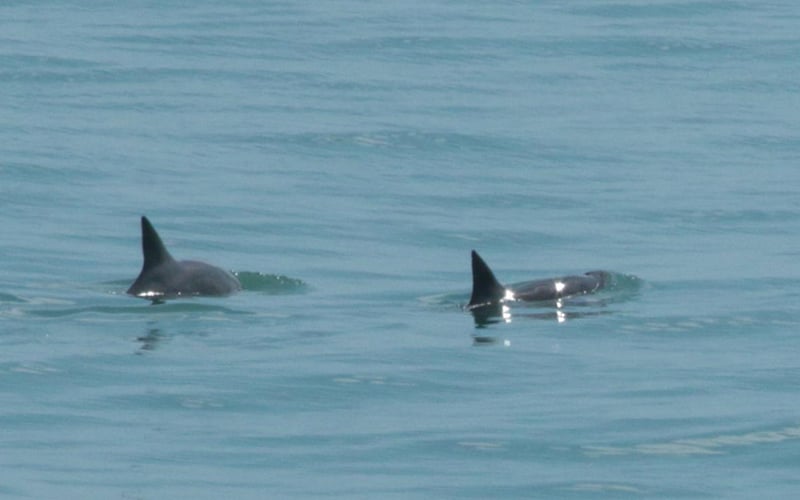
Scientists from Mexico and the United States use acoustic monitoring to estimate the number of vaquitas, but getting a glimpse of them can help determine the age, size and health of the animals. (Photo by Melissa Romao/Conanp/Sea Shepherd/Museo de la Ballena)

Scientists spotted three pairs of vaquita marinas from Aug. 19 to Sept. 3. The little porpoises live only in the northern reaches of the Sea of Cortez. (Photo by Jay Barlow/Conanp/Seat Shepherd/Museo de la Ballena)
HERMOSILLO, Sonora, Mexico – The vaquita marina is the world’s smallest and most endangered marine mammal, with as few as 10 remaining in Mexico’s Sea of Cortez. So leading scientists from Mexico and the United States, including with the National Oceanic and Atmospheric Administration, were excited to see three pairs of the little porpoises from Aug. 19 to Sept. 3.
“It’s pretty much the best reward we could ever ask for,” said Eva Hidalgo, science coordinator with Sea Shepherd Conservation Society, which patrols the vaquita’s habitat for illegal nets and accompanied scientists on the vaquita sighting expedition.
Hidalgo said scientists use acoustic monitoring to estimate the number of vaquitas, but getting a glimpse of them can help determine their age, size and health.
It’s also a reminder to the world that vaquitas are still out there.
“It’s still surviving against all odds,” Hidalgo said.
She said that reinforces the need to protect remaining vaquitas from illegal fishing nets used to catch a large, endangered fish called the totoaba that’s valuable on the Asian black market for its swim bladder, or buche. But the nets used to catch the totoaba also trap and drown vaquita marinas, which is Spanish for “little sea cows.”
This March, Sea Shepherd found a dead vaquita in a totoaba fishing net that crew members pulled from the northernmost reaches of the Sea of Cortez – the only place where the little porpoises live.
“The first vaquita I saw was a dead one,” Hidalgo said. Seeing one that’s alive, she added, “it just gives me hope and it just gives me a sense of responsibility.”
Scientists saw three pairs of vaquita during the expedition, and they believe they were six different individuals, Hidalgo said.